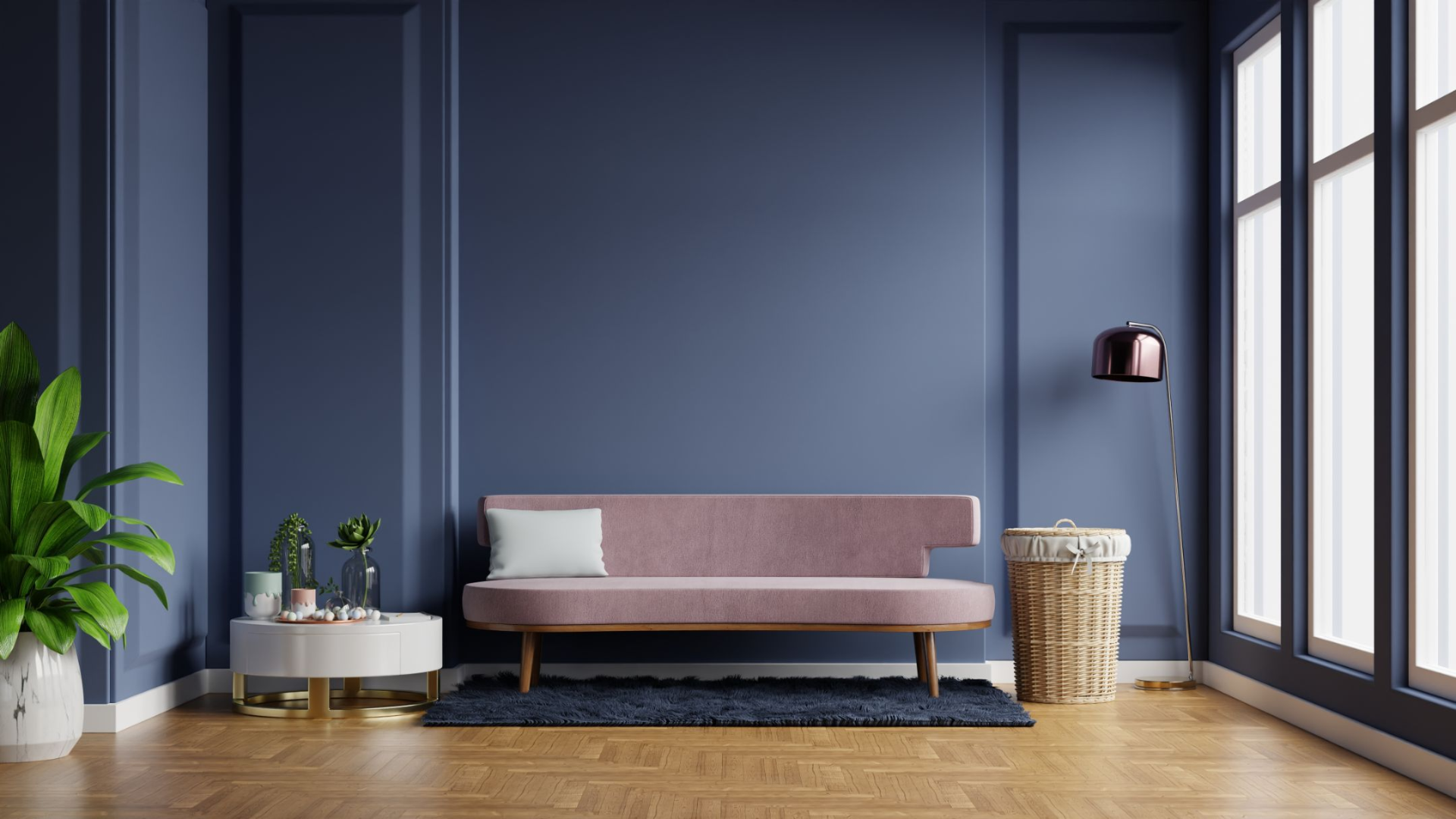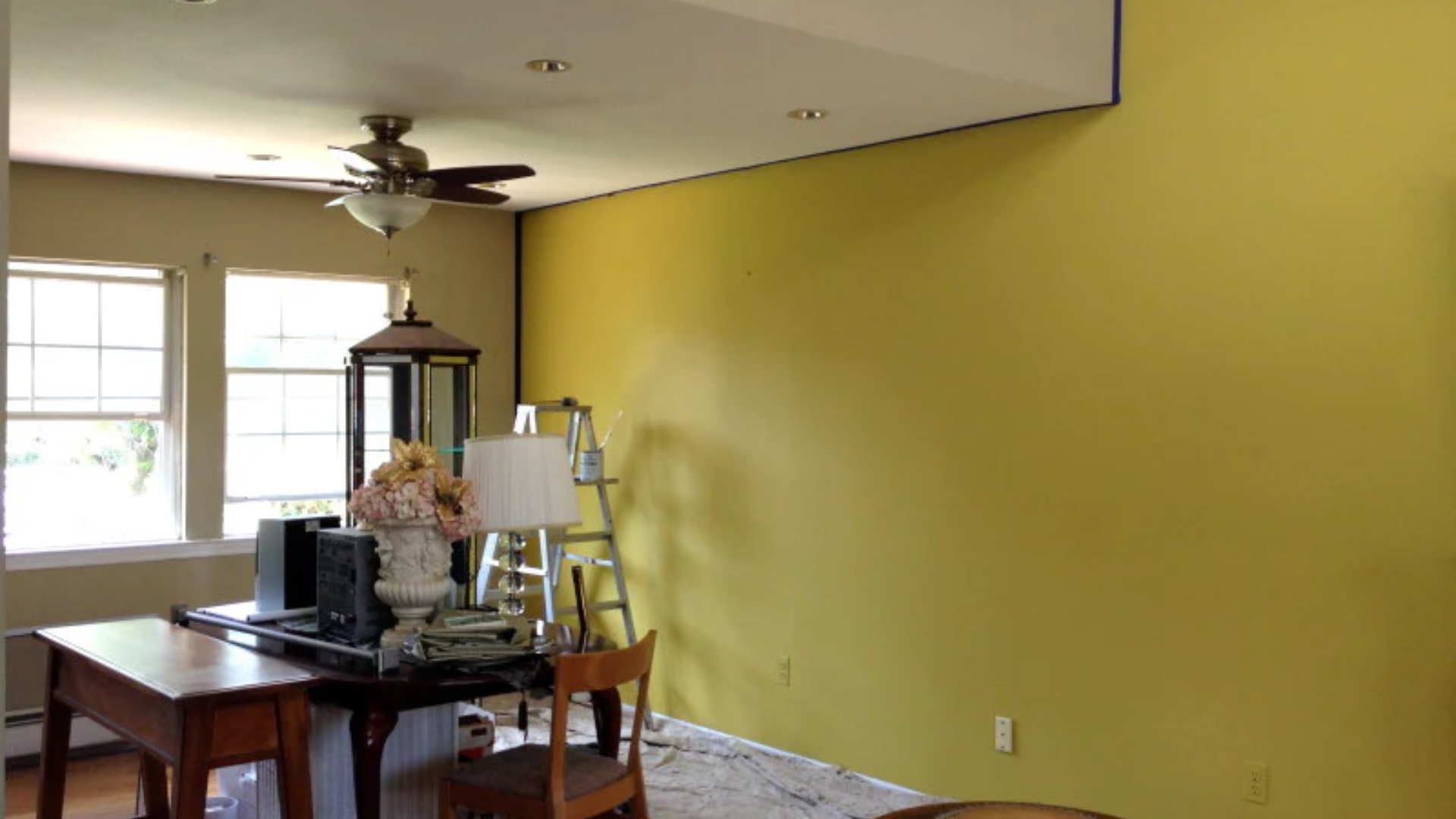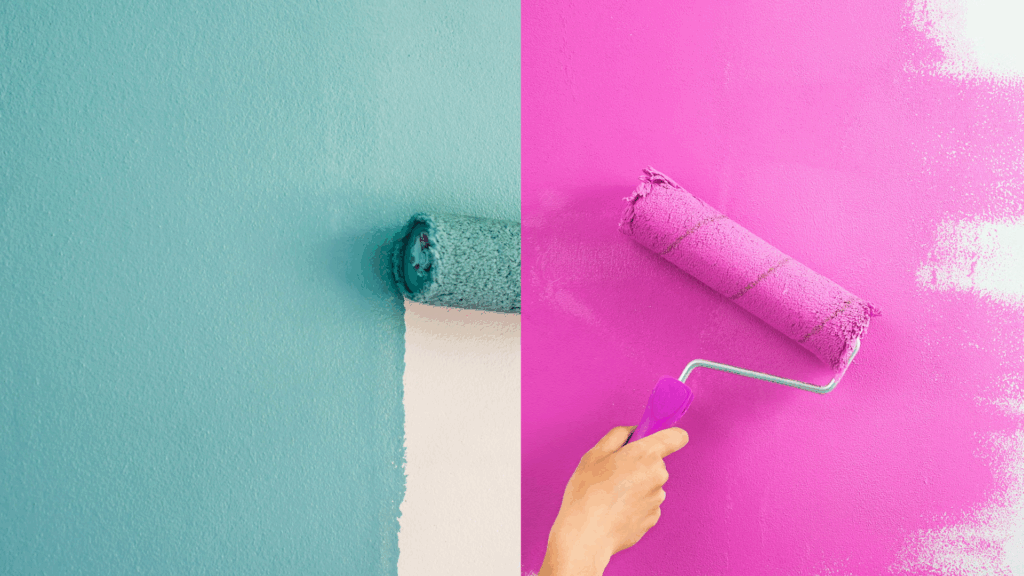When I started exploring paint options for my walls, I thought “flat” and “matte” were just two words for the same thing.
However, once I tested them, I noticed how each finish behaves slightly differently.
They may look similar at a glance, but their performance, durability, and best uses vary more than you’d expect.
In this guide, I’m breaking down everything I learned about flat and matte paint.
You’ll find side-by-side comparisons, practical benefits, ideal use cases, and tips to choose the right finish for your space.
If you’re working on a home makeover or repainting a room, understanding the subtle but important differences between flat and matte paint can help you make a more confident decision.
What Is Flat Paint?

Flat paint has no noticeable sheen; it reflects very little to no light. This ultra-matte finish gives surfaces a soft, velvety appearance, perfect for creating a calm and muted look.
Because it doesn’t reflect light, flat paint hides wall imperfections, such as dings, dents, or texture inconsistencies, better than any other finish.
However, flat paint is less durable and not very washable. It’s best suited for low-traffic areas where the surface won’t be frequently touched or scuffed, such as ceilings, formal living rooms, or adult bedrooms.
Flat paint also provides excellent coverage, often requiring fewer coats than glossier options. It absorbs light rather than reflecting it, which helps reduce glare in brightly lit spaces.
This makes it an ideal choice for rooms where a cozy or intimate atmosphere is desired.
Benefits of Flat Paint
Flat paint offers excellent coverage and a smooth, non-reflective finish, ideal for concealing flaws and enhancing calm, low-traffic spaces.
- Best at hiding wall imperfections
- Great for ceilings and textured walls
- Creates a modern, minimalistic look
- Ideal for low-traffic, no-touch surfaces
- Easy to touch up without visible edges
What Is Matte Paint?

Matte paint is very similar to flat but has a slightly higher sheen, usually around 5–10%.
This small bump in sheen gives it just a bit more durability and a touch of light reflection without making the walls look shiny.
It still hides flaws well, but can handle a little more wear than flat paint.
Matte paint is well-suited for bedrooms, living rooms, and offices where a smooth finish and occasional cleanability are desired.
It’s a middle ground between the ultra-soft flat look and the more durable satin or eggshell finishes.
Matte paint also adds a rich, velvety depth to walls, helping colors appear more saturated without the gloss.
While it’s not ideal for high-traffic areas, matte is a great choice when you want a balance between aesthetic softness and a bit of practicality.
Benefits of Matte Paint
Matte paint strikes a balance between softness and function, offering low sheen, decent durability, and a refined, smooth appearance.
- Slightly more durable than flat
- Offers subtle elegance with soft sheen
- Hides imperfections better than higher-sheen paints
- Suitable for bedrooms and general living areas
- Easier to clean than flat (though still limited)
Flat vs. Matte Paint: Key Differences

Flat and matte might seem interchangeable, but the real-world results say otherwise.
1. Sheen Level
Flat paint has virtually no sheen, creating a completely matte surface that absorbs light and minimizes glare. It gives walls a smooth, uniform appearance.
Matte paint, while still low-sheen, reflects a small amount of light, around 5–10%. This subtle reflection adds a soft visual depth that flat lacks.
The slight sheen also enhances color richness just enough to give the space a polished yet understated finish.
2. Durability & Cleanability
Flat finishes are best suited for surfaces that don’t need much cleaning, as they tend to absorb stains and show marks easily. They can also rub off if scrubbed too hard.
Matte finishes, thanks to a small bump in sheen, offer better durability. They’re slightly more stain-resistant and easier to wipe clean, making them more practical for lightly used walls in bedrooms, offices, or living spaces.
3. Appearance & Touch-Ups
Flat paint provides the most consistent, non-reflective look, making it ideal for covering large areas and hiding wall flaws like bumps or texture inconsistencies. It blends seamlessly when touched up, with no visible edges.
Matte paint also hides imperfections well but has a soft finish that feels slightly richer. It offers a more refined appearance while still allowing for relatively easy touch-ups in low-traffic zones.
Quick Comparison Table:
| Feature | Flat Finish | Matte Finish |
|---|---|---|
| Sheen | None (0–3%) | Very low (5–10%) |
| Appearance | Soft, chalky look | Slight glow with more visual depth |
| Durability | Low, prone to marks and smudges | Moderate, slightly better resistance |
| Imperfection Hiding | Excellent | Very good |
| Cleanability | Poor, best for untouched surfaces | Better than flat, occasional cleaning is okay |
| Best Uses | Ceilings, adult bedrooms, and low-traffic rooms | Living rooms, guest rooms, and home offices |
Flat vs Matte: What to Use and Where
Flat and matte finishes serve different room needs based on traffic level, surface condition, and desired look.
Flat Finish
Flat paint works best in calm, low-traffic areas where durability isn’t the main concern.
It’s perfect for ceilings, formal rooms, and any surface with blemishes or uneven textures, as its no-sheen finish hides flaws exceptionally well.
- Ceilings that require a non-glare surface
- Low-traffic adult bedrooms that don’t need frequent cleaning
- Formal dining rooms are used occasionally
- Textured or uneven walls that benefit from flaw-hiding coverage
Matte Finish
Matte paint is a step up in durability from flat, making it a solid choice for slightly busier spaces. It still hides imperfections well but can stand up to occasional cleaning.
The soft sheen gives walls a richer, more elegant appearance, ideal for quiet rooms that still see moderate use.
- Guest rooms that stay tidy but need a polished look
- Home offices where both style and minimal upkeep matter
- Living rooms with minimal traffic that benefit from a soft finish
- Hallways with light use that may need the occasional wipe-down
Which Is Right for You: Flat or Matte?
Choosing between flat and matte depends on the room’s function and how much wear the walls will get.
Flat paint is perfect for ceilings and quiet spaces where you don’t need to worry about fingerprints or scuff marks. It gives walls a clean, uniform finish that hides almost everything underneath.
Matte, on the other hand, is a smart pick when you want a similar elegant finish but with just a little more strength.
It’s better suited for everyday living spaces that might need the occasional wipe-down but don’t see high foot traffic. If you’re unsure, start with matte, it’s more forgiving and still delivers that classic, low-sheen look.
Application Tips & Troubleshooting
Proper prep and technique ensure a smooth, flawless finish, especially when using low-sheen paints like flat or matte.
- Always prep your walls, clean and patch imperfections first
- Use a high-quality primer for even coverage
- Apply two thin coats instead of one thick coat
- Use a roller with the right nap for your surface texture
- Test the sheen on a small patch in different lighting
- Avoid scrubbing flat paint, dab gently if needed
- Matte can handle a light wipe, but still clean gently
Conclusion
Choosing the right paint finish can make a huge difference in how a room looks and performs.
I’ve learned that flat paint gives you that flawless, subtle surface you often see in magazines, perfect for ceilings or spots that rarely get touched.
Matte brings a similar softness but with a slight sheen that helps it hold up better in everyday use.
If you’re going for calm and cozy without much upkeep, a flat might be the winner. If you want just a touch more resilience without losing the elegant vibe, matte is the way to go.
Think about where the paint’s going, how the room gets used, and how much cleaning it’ll need.
Then grab a sample and test it out; it’s the best way to see which finish feels right in your space.

